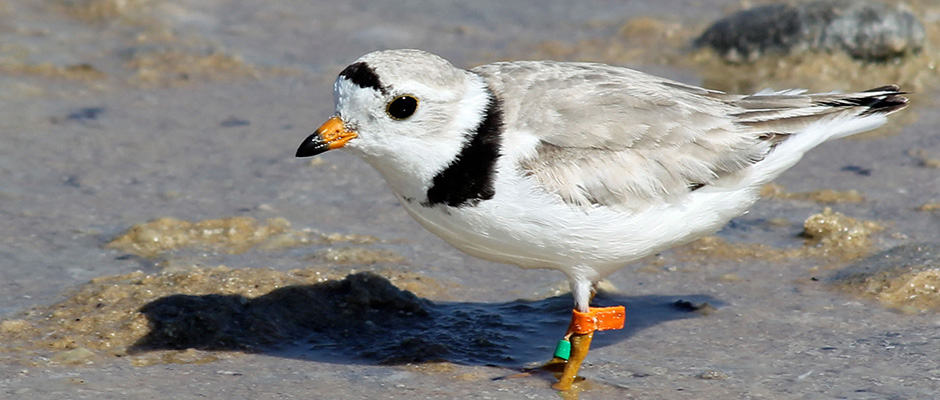Share this article
Piping Plover Aided by Predator Management
Among the most endangered bird populations in the country, Great Lakes piping plovers are imperiled chiefly by significant loss of and degradation to the wide sandy beaches they require for nesting. On the available beaches, they often face a wide range of predators. Nests themselves can be effectively protected with fenced exclosures but the precocial chicks remain vulnerable to predators until they fledge.
As plover populations have declined, the loss of any young or adults becomes even more significant. By the early 2000’s, management agencies recognized predators were an important limiting factor.
At the Sleeping Bear Dunes National Lakeshore in Michigan, the most important plover site is Dimmick’s Point on North Manitou Island where avian predators were frequent. Starting in 2003 and partnering with Michigan DNR, US Fish and Wildlife Service and the National Park Service, USDA Wildlife Services began protecting plovers. In addition to nest exclosures, predators were removed and gulls were dispersed with pyrotechnics and shooting. Results of that project from 2003 through 2014 were presented at the 2015 Wildlife Damage Management Conference held in Gatlinburg, TN.
Predator management that included lethal control appears to have benefitted plovers. Before predator management (1993-2002) the number of plovers fledged averaged 3.9/year compared to the number of plovers lost averaged per 6.3/year. Tracking of WS work from 2003-14 showed that when active predator management was applied, the average number of plovers fledged was 18.5/year compared to the average number of plovers lost at 10.6/year.
The 27-day period between hatching and fledging has been perilous for plover chicks. Predator management at Dimmick’s Point, however, has proven effective at increasing the odds that chicks can survive this critical stage. Prior to predator management (1993-2002) only 45% of hatched chicks survived to fledge; once predator management was instituted, 64% of hatched chicks survived to fledge.
Protecting piping plovers isn’t easy. But an adaptive management approach that includes a full range of methods and close communication amongst partners has been key to this effort’s success.
Wildlife Services is a strategic partner of The Wildlife Society
Header Image: Image Credit: USFW, Vince Cavalieri








